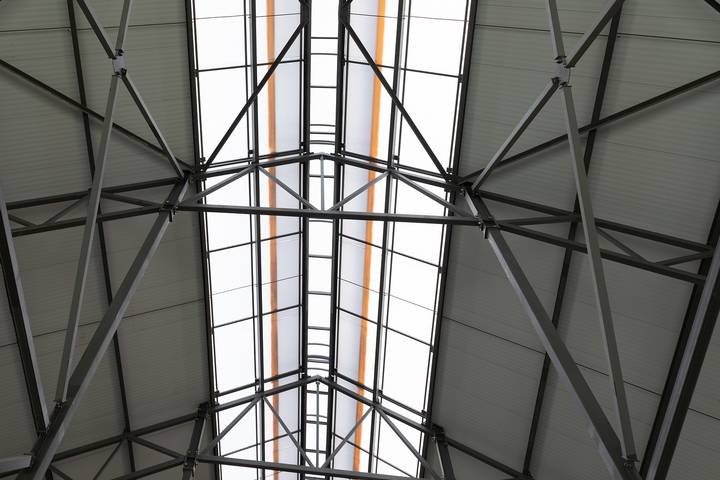
7 Easy and Affordable Barn Ventilation Ideas
A barn is a unique type of building. While it can be a simple build, it can also comprise various features and design additions that make it rather complex. Ventilation is key to preventing moisture damage and ensuring items or livestock are comfortable. Moisture, in particular, can prove problematic as it leads to mould growth, rotten materials, poor animal health, a negative impact on human health, and discoloration of items and materials.
Here are some barn ventilation ideas to consider for your property.
Idea #1: Use Your Doors and Windows
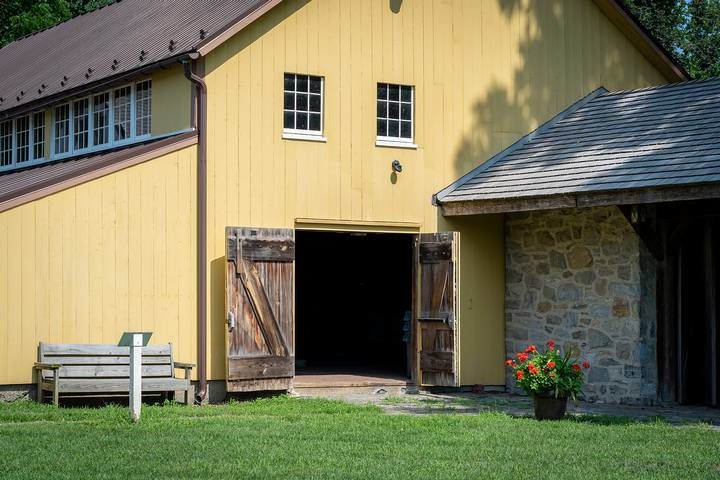
Doors and windows are standard barn ventilation fare, but they deserve mention here because not all barns utilize their property. They promote air circulation, especially on a day with a little wind. Wind direction will be what determines which doors and windows you want open.
The open doors and windows should face either side as the wind typically blows west-to-east. If you do not have adequate windows and doors in your barn design, move on to the next step while maximizing what you have.
Idea #2: Cupolas Aren’t Just Aesthetics
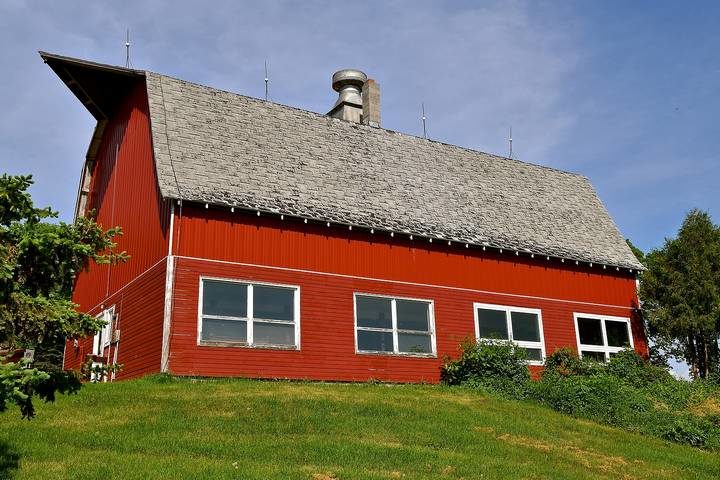
A cupola is more than an ornamental dome. Adding a cupola to your barn allows otherwise trapped heat to escape through side vents or using a barn exhaust fan. A barn for horses is perfect for a dome, as the moisture and scent of manure will rise and exit with ease.
No musty air anymore! Cupolas come in a range of sizes, small and large. They can also be decorated however you see fit. Your dome must be carefully installed, however. Improper installation can mean ineffective barn ventilation and the cupola not functioning properly.
Idea #3: Try Sidewall Overhangs
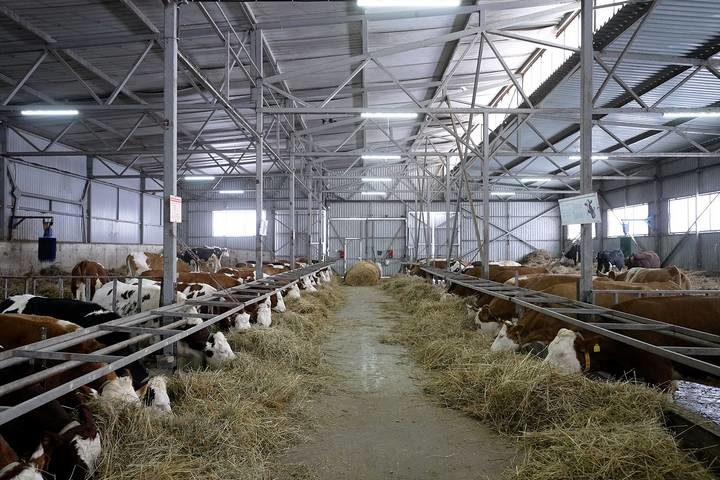
Warm air rises. Cold air falls. Heat causes gas particles to expand, and their density decreases while cold air remains dense. Sidewall overhangs have vented soffits to draw cool air inside and a steel ridge at the roof’s peak to release humid air.
Alternatively, an eave vent is something you can do instead of installing sidewall overhangs. It performs the same task. A vent is mounted underneath the eave of your barn, and stale air exits through the steel ridge vent. This allows your barn to circulate air through with ease.
Idea #4: Opt for Barn Exhaust Fans
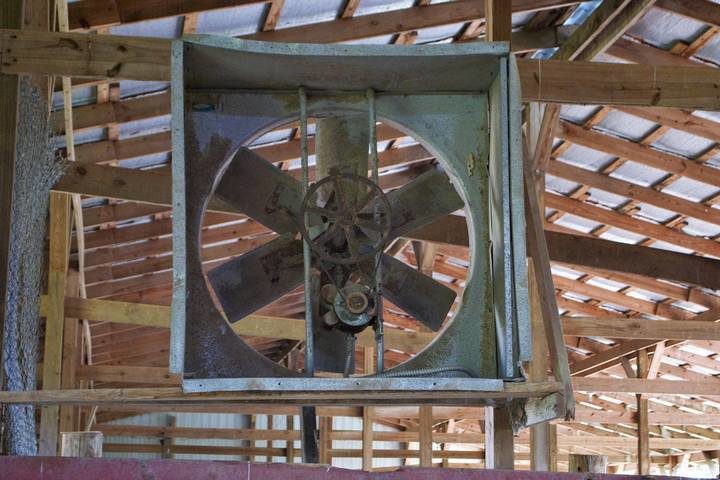
A barn exhaust fan provides efficient mechanical ventilation that controls air movement in a way that natural air circulation doesn’t. If you struggle to control or want more efficient barn ventilation, exhaust fans can do that.
By installing ceiling fans, for example, some barns save upwards of 30% in their energy cost year-round. Barn exhaust fans are available in all sizes, styles, features, materials, and colours, meaning it is likely surprisingly simple enough to find an exhaust fan that’s right for your barn.
Idea #5: Passive Ventilation Requires No Electricity
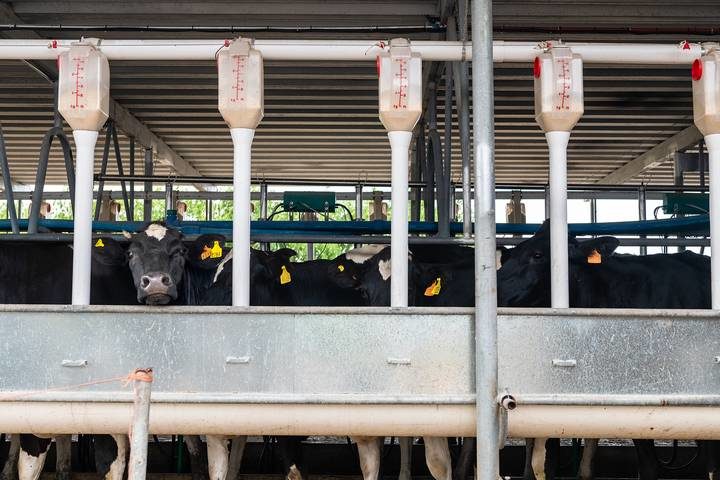
Using your doors and windows, cupolas, ridge vents, and sidewall overhangs are all examples of passive ventilation. It’s cheap, requires no electricity, and requires no upkeep, as nothing can break down and/or require maintenance. In a moderate climate, passive ventilation works exceptionally well.
The difficulty is that not every farm is in a moderate climate. Few are. A barn may not receive adequate ventilation based on passive ventilation alone, where mechanical ventilation, i.e. barn exhaust fans, comes into play.
Idea #6: Mechanical Ventilation Is Most Efficient
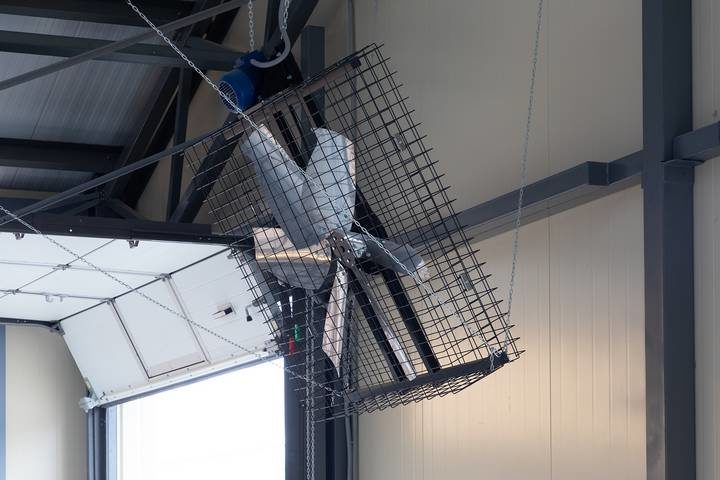
The argument for barn exhaust fans and other forms of mechanical ventilation for a barn is that it’s more efficient. Fans used to control and regulate air within a barn do so more quickly and effectively.
You may have ceiling fans, air inlets, barn exhaust fans, and/or portable or circulating fans at work in your barn. Of course, cost can be a drawback to some as it is not free barn ventilation. Air pressure must also be managed, meaning you must decide what air pressure system you want: positive, negative, or neutral.
Idea #7: Positive, Negative, And Neutral Air Pressure
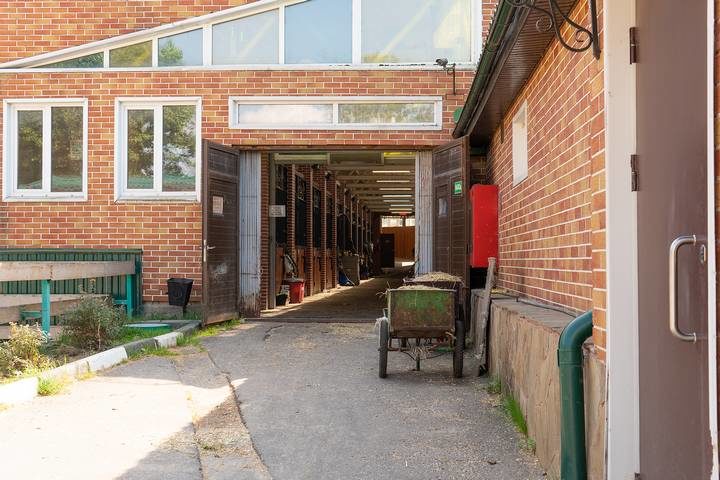
Using barn exhaust fans and other types of mechanical ventilation, you have three types of air pressure to option.
Positive air pressure
Positive air pressure pulls outside air into the barn. Barns with open doors for livestock to enter and exit are best recommended to use positive air pressure.
Negative air pressure
Negative air pressure uses exhaust fans to pull air out of the barn, while air inlets allow cool air to be pulled in. Negative pressure is preferable to positive air pressure if the barn doors can be shut occasionally or constantly.
Neutral air pressure
Neutral air pressure uses fans to draw in air and exhaust it from the barn. Neutral air pressure utilizes multiple fans and exhaust ducts to circulate air. As this type of air pressure requires more fans and mechanics to operate, it is typically the most expensive to fund.
